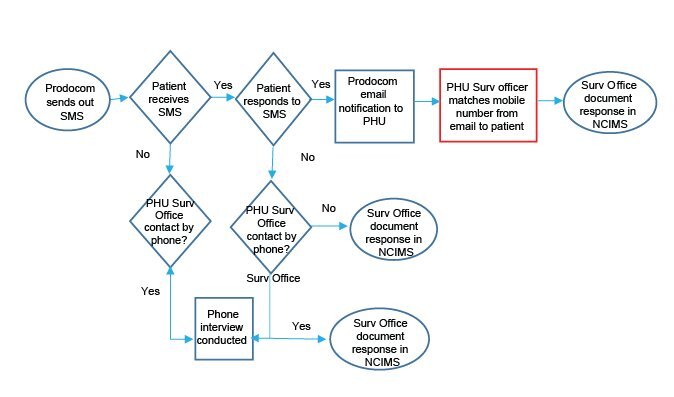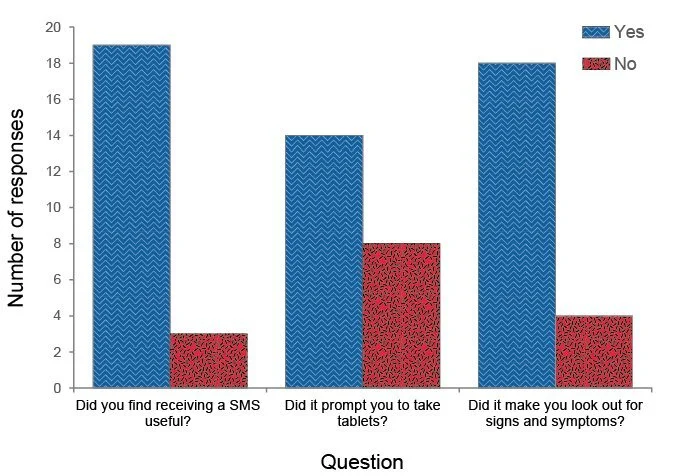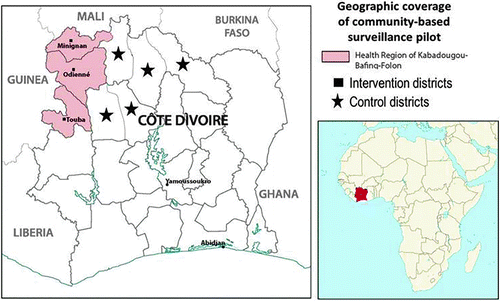From the Australian Government's Communicable Disease Intelligence publication, a study on conducting daily SMS surveillance of high-risk individuals during an outbreak of avian influenza in the town of Young, in New South Wales:
The Communicable Diseases Network Australia National Guidelines for Public Health Units for avian influenza recommends daily follow-up of close contacts for up to 10 days after the last exposure to infected birds or environments. Contact management procedures involve offering antiviral prophylaxis, and PHU surveillance officers contacting cases and exposed persons through a daily telephone follow-up. The purpose of this call is to monitor for newly developedsymptoms. In the event of a large outbreak this process can be time consuming and a challenge when contacts are likely to continue with their normal daily routines, such as working on the property, and are unavailable to speak on the telephone.
To assist with this large monitoring activity a web-based SMS was used to send messages to mobile telephones of all contacts identified as having high-risk exposure to AI. The purpose of the SMS was to remind identified contacts to self-monitor for influenza-like symptoms until the AI surveillance period expired, report to PHU if any symptoms developed and prompt contacts to take prophylactic Tamiflu medication, if prescribed.
The study was done according to a specified protocol allowing for the use of phone surveillance if any individual was not receiving the SMS surveillance messages (click diagram above to view protocol).
Individuals participating overwhelmingly felt that the SMS surveillance system was useful, and a majority indicated that it was useful in getting them to take their Tamiflu tablets.
The study report impressive increases in effectiveness, compared with phone (voice call) surveillance, and especially noted that the increased ease and decreased cost might make it "the only way" to conduct surveillance in a very large outbreak:
The application of SMS during this outbreak was estimated at 2.5 times more cost effective than telephone follow-ups and would substantially reduce staffing costs further in the event of a very large outbreak. In addition, it was noted by a number of contacts that the SMS increased their confidence in the response to the situation during a difficult time. In larger outbreaks, SMS could be the only way to resource the required follow-up.
Happily, Magpi users are able to create SMS systems like this easily, without programming, and at very low cost – Magpi Use Cases.





